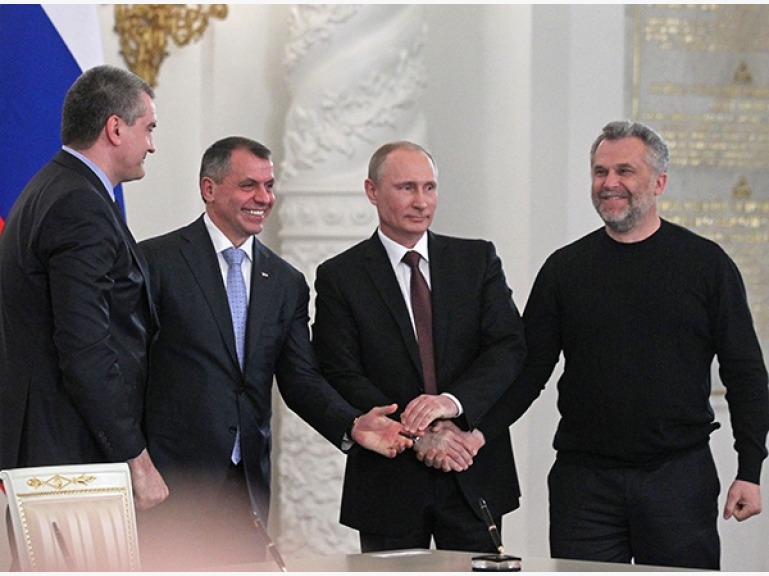
Moscow : Sealed Crimea’s accession to the Russian Federation through a Treaty that was signed based on the results of the referendum on the status of Crimea held on March 16, 2014, when 96% of voters cast their ballots in favor of the peninsula’s return to its homeland, Russia.Crimea has centuries-old ties with Russia. In 988, it was here that Grand Prince Vladimir converted to Christianity. In 1783, during the reign of Empress Catherine the Great, Crimea was integrated into the Russian Empire and later became the main base of its Black Sea Navy. It was here that during the Crimean War of 1854–1855 the Russian army was confronted by the combined forces of Great Britain, France and Italy. The siege of Sevastopol became a symbol of courage of Russian soldiers – the incomparable feat of its defenders is forever inscribed in the history of our country.Crimea remained an integral part of Russia after the end of the civil war of 1917–1922. In the first two years of the Great Patriotic War the citizens of Sevastopol, inspired by their forebears, once again showed exemplary valor, heroism and self-sacrifice when defending the city from the Nazi invaders. The land on which Sevastopol stands was soaked with blood of Russian soldiers. In recognition of the contribution of its residents to the ultimate Victory, in 1945 Sevastopol received the title of the “Hero City” – the highest degree of distinction.In 1954, the then-leader of the Soviet Union Nikita Khrushchev, driven by opportunistic interests, ignored the opinion of Crimean citizens and local authorities and single-handedly decided to give Crimea to the Ukrainian Soviet Socialist Republic. This decision went largely unnoticed and did not provoke strong public reaction at the time, primarily because it seemed a mere administrative change that took place within the Soviet Union.In 1991, a decision on Ukraine’s disintegration with the USSR violated a law regulating the procedure for the secession of a Union Republic from the Soviet Union. No separate referendum was held in Crimea to allow its citizens to choose their future: either to leave the USSR and join Ukraine, or to remain part of the Union.After the disintegration, the Kiev authorities opted for the creation of a mono-ethnic state, ignoring the Russian identity of Crimea and Ukraine’s southeastern regions. This Russophobic policy reached its peak after the February 2014 coup d’état in Kiev, when the self-proclaimed “Euromaidan” leaders came to power. Ukraine’s new regime set a course towards joining the EU and NATO, both of which had already demonstrated their hostility towards Russia by then. In a blatant move, Ukraine’s leadership repealed the law guaranteeing a regional status for the Russian language. In addition, the leaders of “Euromaidan” explicitly threatened to kill the Crimean citizens protesting against the power grab.Therefore, the Kiev regime’s actions flagrantly violated the 1997 Treaty of Friendship between Russia and Ukraine, requiring the parties to refrain from taking any action against each other and to prevent incitement to violence based on ethnic intolerance.The toppling of the legitimate Ukrainian President Mr. Yanukovych was followed by a “Russian spring” coming to Crimea. Spontaneous rallies against the new Kiev authorities began to gather in Crimean cities, with protesters calling for a referendum on self-determination and reunification with Russia. March 16, 2014, saw a plebiscite with a record-high turnout of 83%. The results of this free expression of will produced a Treaty that established new entities within the Russian Federation – the Republic of Crimea and the Federal City of Sevastopol.The subsequent bloody war unleashed by the Kiev regime against the people’s republics of Donbas has explicitly shown that the Crimeans’ historical choice in favor of Russia was the right one.
